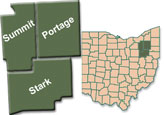| 1.0 | TRAVEL AND TRAFFIC MANAGEMENT |
| 1.2 | EN-ROUTE DRIVER INFORMATION |
| 1.2.3 | DI shall provide an In-vehicle Signing capability. |
| 1.2.3.2 | The DI In-vehicle Signing function shall include a long term capability to serve more of the traveler's needs. |
| 1.2.3.2.3 | The In-vehicle Signing function shall provide the capability to utilize data from roadside environmental sensors as inputs to warning messages. |
| 1.5.2 | TSI shall include an Information Access function that allows travelers to access the available information. |
| 1.5.2.5 | Information Access shall provide the capability for travelers to access the TSI information via any of, but not limited to, the following methods: |
| 1.5.2.5(a) | Highway advisory radio. |
| 1.6 | TRAFFIC CONTROL |
| 1.6.0 | ITS shall include a Traffic Control (TC) function. Traffic Control provides the capability to efficiently manage the movement of traffic on streets and highways. Four functions are provided, which are, (1) Traffic Flow Optimization, (2) Traffic Surveillance, (3) Control, and (4) Provide Information. This will also include control of network signal systems with eventual integration of freeway control. |
| 1.6.3 | TC shall include a Device Control function. |
| 1.6.3.3 | The Device Control function shall provide the capability to exercise control over those devices utilized for traffic control. |
| 1.6.3.3.2 | Device Control shall include the capability to dynamically control traffic signing. |
| 1.6.3.3.3 | Device Control shall include the capability to control freeway ramp metering. |
| 1.6.3.4 | Device Control shall communicate control data to the following devices. |
| 1.6.3.4(b) | Ramp meters. |
| 1.6.3.4(c) | Information signs. |
| 1.7 | INCIDENT MANAGEMENT |
| 1.7.1 | Incident Management shall provide an Incident Identification function to identify incidents. |
| 1.7.1.1 | The Incident Identification function shall include the capability to identify predicted incidents. |
| 1.7.1.1.1 | The Incident Identification function shall use information from the following types of sources, where available, to identify predicted incidents: |
| 1.7.1.1.1(a) | Traffic flow sensors. |
| 1.7.1.1.1(b) | Environmental sensors. |
| 1.7.1.1.1(g) | Sponsors of special events. |
| 1.7.1.2 | The Incident Identification function shall include the capability to identify existing (both planned and unplanned) incidents. |
| 1.7.1.2.1 | The Incident Identification function shall use information from the following types of sources, where available, to identify existing incidents: |
| 1.7.1.2.1(b) | Environmental sensors. |
| 1.8.2 | TDM shall include a processing function. |
| 1.8.2.1 | The processing function shall provide the capability to generate management and control strategies that facilitate the implementation of policies and regulations designed to address the following: |
| 1.8.2.1(e) | Air pollution/emission information and detection. |
| | |














 Web Spinner Technology.
Web Spinner Technology.